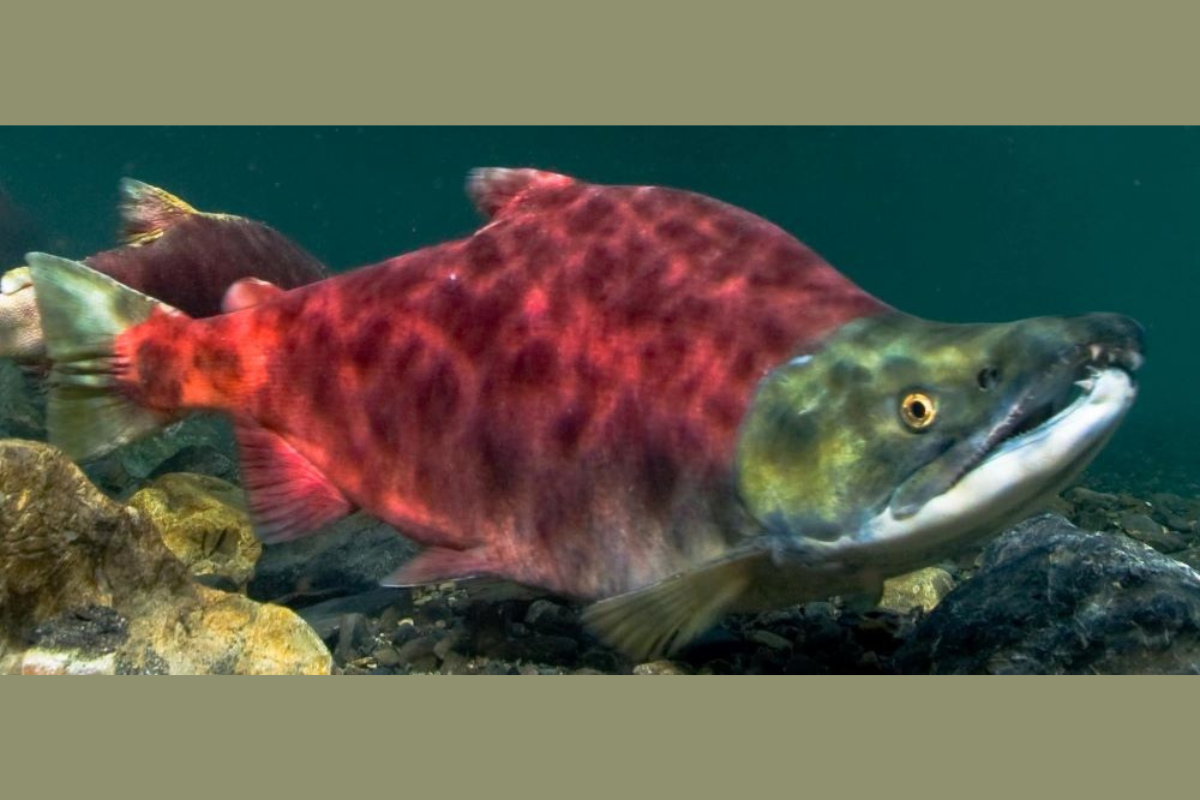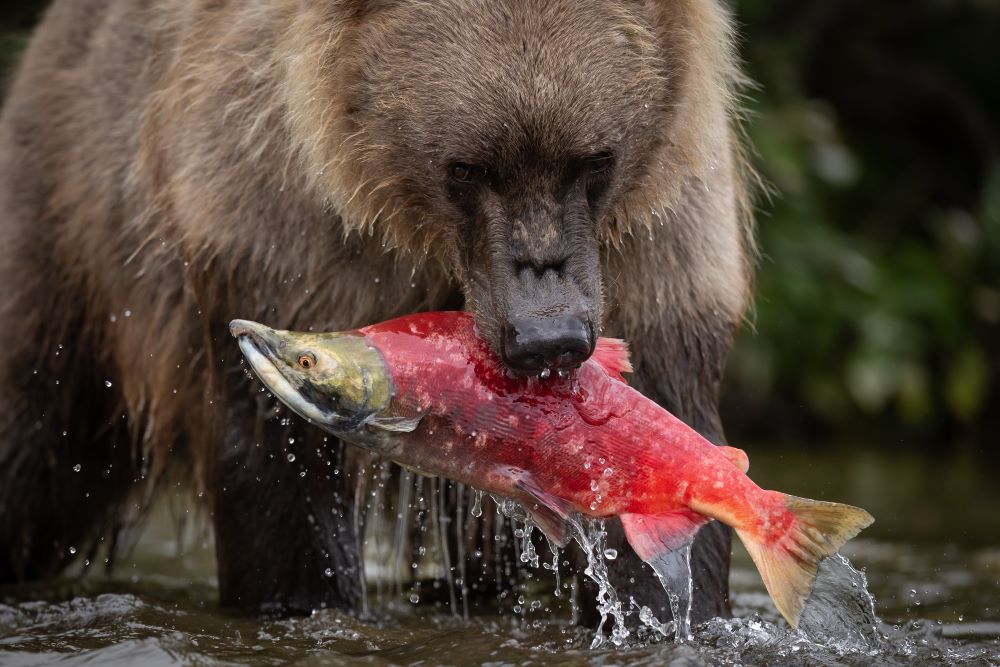
The Copper River produces some of the world’s most delicious sockeye salmon. Of the three species that run here, sockeye are the most abundant, and the smallest. The name sockeye comes from suk-kegh, the name of the fish in the British Columbian Indigenous language Halkomelem. Translated, it means red fish.
While one of the defining traits of Chinook salmon is its size, sockeye is known for its deep red/orange color, both in the water and on the plate.
But that isn’t the only thing that makes Copper River sockeye salmon distinct among the region’s salmon species.
Wild Sockeye Salmon Life Cycle
Sockeye, like Chinook and Coho, is anadromous. It hatches in freshwater, lives its adult lives in the icy ocean waters, and swims upstream to its freshwater birthplaces to spawn.
Unlike other Copper River wild salmon, sockeye does not usually spawn in streams. They prefer the quieter waters of the lakes in the Copper River watershed. Sockeye eggs hatched in lakes may spend up to three years in freshwater before heading out to sea.
Alaskan sockeye salmon generally grow up to two feet in length and weigh around 5-6 pounds. The largest documented sockeye was nearly three feet and weighed 15 pounds. Coho generally top out at around 11 pounds while Chinook usually weighs in at a kingly 30 pounds.
Sockeye salmon feed on zooplankton, unlike Chinook which feed on smaller fish. A female sockeye lays between 2,000 and 5,000 eggs during spawning.
During their ocean life, Copper River sockeye salmon have blue backs, silver sides, and white bellies. But when they return to the river to spawn, their bodies turn a vibrant red and their heads green. Males develop a pronounced hump, called a kype, on their backs and an exaggerated hooked jaw filled with sharp teeth. Larger fish, both male and female, have a better chance of reproducing.
Once spawning is complete, Copper River sockeye salmon dies within weeks. Like Chinook salmon, sockeye provide nutrients important to the ecological health of the Copper River Basin.

Sockeye Salmon Stock Management
Sockeye salmon have a remarkable range. They are found on the Pacific Northwest coast from Oregon to Alaska, as well as on the waters of Japan and Siberia. Unlike other regions, the sockeye salmon population in Alaska is stable and managed accordingly.
Wild sockeye salmon is the most economically valuable salmon species in Alaska. More abundant than Chinook and Coho, they are also highly prized by chefs and home cooks. Sockeye is harvested for commercial, subsistence, and sport fishing.
Copper River Sockeye Salmon for Diners
These large harvests are of great significance to the entire Copper River area. Sockeye has the deepest red/orange flesh of any salmon species, with a firm texture and deep flavor.
This high-quality meat brings better revenue to the region than pink or chum salmon, which are paler and have a less robust taste and texture. Sockeye fillets are thinner than Chinook but lend themselves well to grilling due to the compact, firm nature of the meat.
You’ll find sockeye salmon on the menu in fine dining restaurants as well as high-quality fish markets. Some of it is canned due to its vibrant color.
Sockeye Salmon Fun Fact
There is a type of sockeye salmon that lives its entire life in freshwater. Called kokanee in the Okanogan and Sinixt Interior Salish languages, this fish lives in lakes and is called by various English names including silver trout, little redfish, and Kennerly’s salmon.
Kokanee may spawn in the same areas as anadromous salmon, but the two groups do not interbreed. There is much debate as to whether kokanee is a subspecies, a different species, or something else altogether.
Kokanee is smaller and does not exhibit the body changes of anadromous sockeye. While they are interesting from an evolutionary standpoint, kokanee will not end up on your plate as Copper River sockeye salmon.
That honor is reserved for the delicious, nutritious, deep red wild sockeye that makes its way upstream every year.
Sources: The Spruce Eats, Alaska Dept. of Fish and Game, NOAA